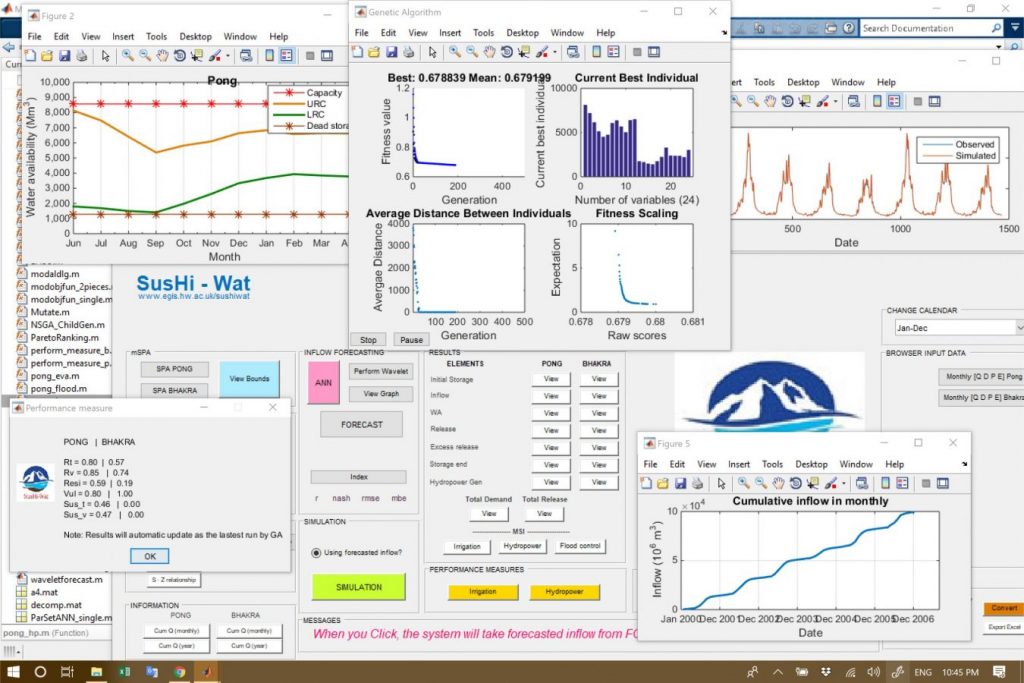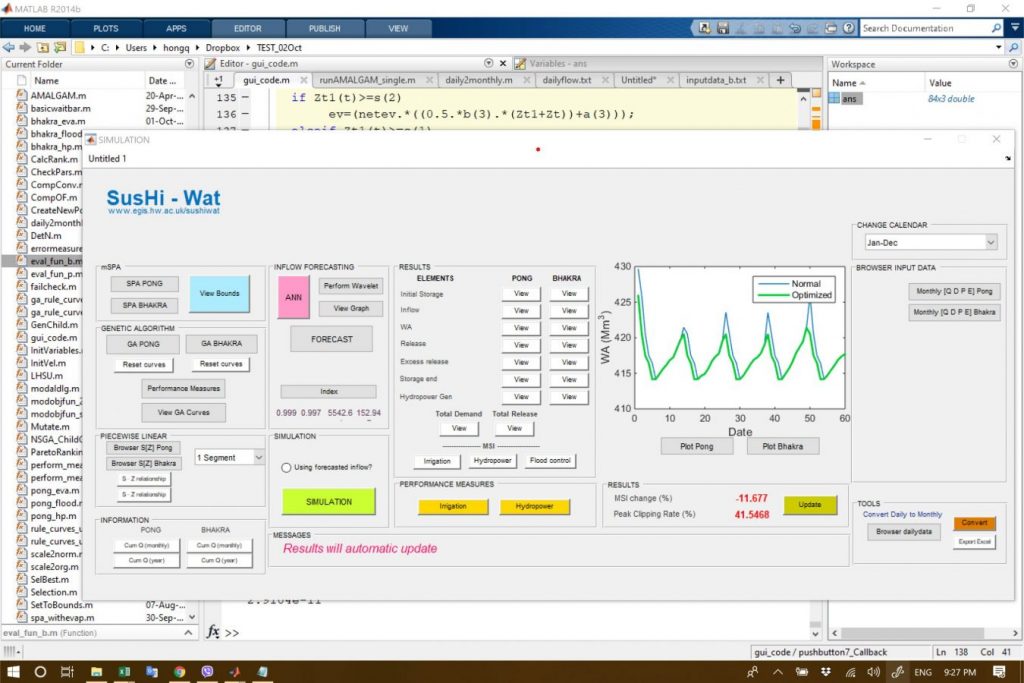SuShi-Wat is a useful tool for reservoir planning and management, particularly it was designed for the Beas-Sutlej river basin, in India.
Calculation starts with initial basic rule curves, these rule curves were derived using the modified sequent peak algorithm. Genetic Algorithm was adopted in this model to search for the possible solutions by given an objective. In this case, multiple objective was employed for irrigated water demand, hydropower generation, and flood control. Performance measures used to evaluate the impacts of the reservoir performance includes time reliability, volume reliability, resilience, vulnerability, and sustainability. The Space rule was used to minimize the volume of spills in a group of reservoirs. To reduce vulnerability of the reservoir system during shortfall periods, hedging rule curves were frequently used at both stand alone and joint reservoir operations. By applying the Space rule in the joint-operation, the total demand from both reservoirs shall be allocated to each reservoir in accordance with their predicted flow pattern. Despite limitations of time, this model basically serves as a preliminary optimisation purpose for the Beas-Sutlej river Basin, India. Further development and suggestions are highly encouraged. For example, it will be helpful to incorporate the recent development with scenarios (such as climate change, social-economic change). Particularly, this model will be applicable to any catchments where many reservoirs exist.
Principle Investigator : Prof. Adebayo J. Adeloye
Developer: Dr. Quan V. Dau






